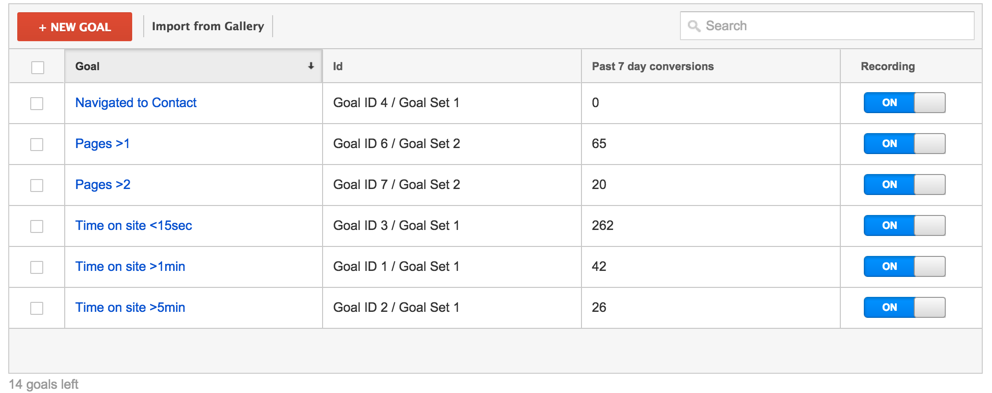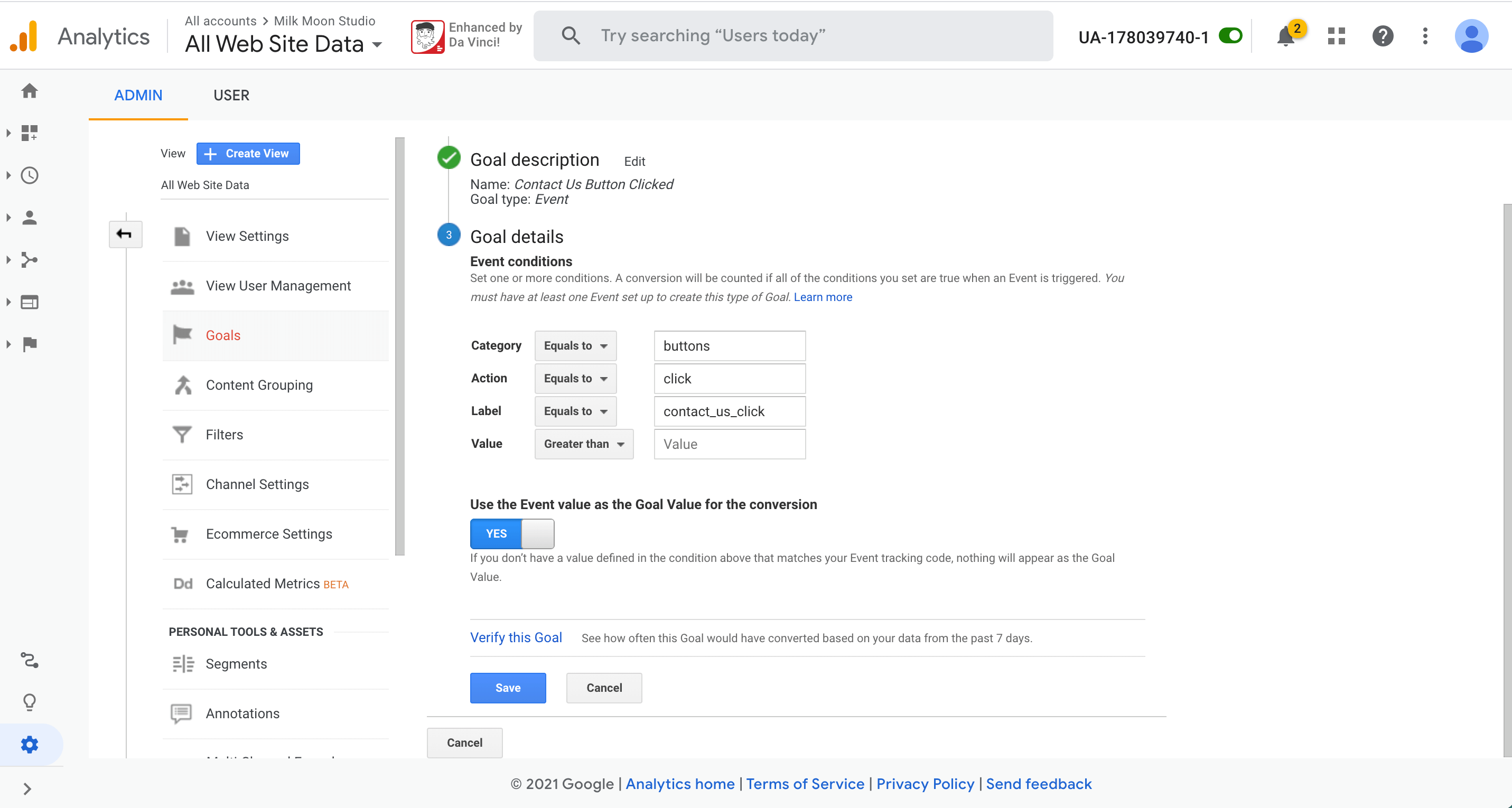What Data Is Google Analytics Goals Unable to Track and Why
What Data Is Google Analytics Goals Unable to Track and Why
Blog Article
Discover the Limitations of Google Analytics Goals: Unveiling the Information Types That Remain Untrackable
As companies progressively count on data-driven decision-making, comprehending the constraints of tools like Google Analytics becomes vital. While Google Analytics Goals offer important insights into user communications, there exist data kinds that avoid tracking, posturing difficulties to a comprehensive understanding of individual habits. These untrackable data types raise concerns regarding the accuracy and completeness of the analytics information that organizations greatly trust for their digital techniques. Interested to reveal the covert unseen areas in your information evaluation process?
Incomplete Customer Journey Tracking
Insufficient user trip monitoring within Google Analytics can impede the capability to precisely analyze individual actions. When the customer trip is not totally tracked, there are spaces in the information that protect against an extensive understanding of just how users connect with an internet site. This lack of understanding can cause missed out on opportunities for optimization and improvements to the individual experience.
One usual issue with insufficient customer trip monitoring is the inability to see the complete course that customers take before completing a goal or leaving the website. Without this details, it is testing to identify where individuals might be running into challenges or rubbing points that avoid them from transforming. In addition, insufficient tracking can cover the effect of certain advertising and marketing efforts or site changes on individual behavior.
To address this constraint, it is essential to set up correct tracking mechanisms within Google Analytics to capture the entire customer journey. This may include establishing occasion monitoring, objective funnels, or making use of devices like Google Tag Supervisor to make sure that no essential interactions go unrecorded. By acquiring an extensive view of the individual journey, web site proprietors can make even more informed decisions to enhance customer engagement and drive conversions.
Acknowledgment Obstacles
Navigating with acknowledgment obstacles in Google Analytics calls for a complete understanding of just how different touchpoints contribute to the general conversion process. Attribution difficulties emerge from the intricacy of modern-day consumer trips, where customers engage with several networks prior to converting.
One common acknowledgment challenge is the difficulty in connecting conversions to the correct resource, particularly in situations where individuals interact with multiple networks prior to converting. This can bring about mistakes in identifying which advertising and marketing initiatives are driving the most conversions. Additionally, cross-device monitoring presents one more attribution obstacle, as customers commonly change between gadgets during their trip, making it testing to track their interactions flawlessly. Online marketers have to very carefully examine and translate attribution information to make enlightened decisions and maximize their advertising strategies properly.
Offline Conversions
Provided the challenges connected with associating conversions accurately in online networks, the dimension of offline conversions offers a significant possibility for online marketers seeking a much more detailed understanding of their clients' journey. Offline conversions refer to activities that consumers take in the real world, such as making purchases in brick-and-mortar shops or over the phone, attending events, or involving with printed materials - what data is google analytics goals unable to track. These conversions are vital for businesses that run both online and offline, as they offer important understandings right into the performance of advertising and marketing projects throughout different touchpoints
Tracking offline conversions typically posed a substantial obstacle for marketing professionals, as it was testing to attach these actions back to certain on-line communications properly. Nevertheless, with advancements in modern technology, such as the assimilation of CRM systems, distinct identifiers, and voucher codes, organizations can currently bridge the gap in between online and offline information to acquire a much more alternative view of consumer behavior. By efficiently gauging offline conversions, marketing professionals can enhance their strategies, assign resources a lot more successfully, and inevitably improve the general client experience.
Cross-Device Monitoring
Cross-device monitoring plays an essential function in recognizing the interconnected nature of consumers' digital interactions throughout numerous gadgets. In today's omnichannel world, where individuals seamlessly switch over in between desktops, tablets, and smartphones, tracking their behavior across these tools is important for marketers to get a comprehensive sight of their customer trip.

Furthermore, privacy problems and policies such as GDPR and CCPA have even more difficult cross-device tracking. With customers demanding even more control over their data and boosted restrictions on monitoring innovations, marketing experts need to discover ingenious and privacy-compliant methods to link individual interactions throughout gadgets.
Dynamic Content Involvement
Understanding customer involvement with vibrant material is crucial in maximizing electronic marketing approaches for boosted target market communication. Dynamic content describes website components that alter based click for more upon individual actions, preferences, or various other aspects, using an individualized experience. Nonetheless, tracking user interactions with dynamic web content positions obstacles for typical analytics devices like Google Analytics.
While Google Analytics can track fundamental communications like clicks and page views, it might battle to record more nuanced engagements within dynamic web content. what data is google analytics goals unable to track. Metrics such as time invested on particular dynamic aspects, hover actions, or interactions within pop-ups are usually not quickly quantifiable making use of standard tracking techniques. This limitation prevents online marketers' ability to totally understand how customers are involving with vibrant material and tailor their approaches accordingly

Conclusion
Finally, Google Analytics objectives have limitations in tracking insufficient user journeys, connecting conversions properly, recording offline conversions, tracking cross-device communications, and measuring vibrant content interaction. These restraints highlight the value of discovering additional tracking methods and tools to obtain a much more comprehensive understanding view website of individual actions and conversions past what Google Analytics can provide.
While Google Analytics Goals deal important insights into customer interactions, there exist data kinds that elude monitoring, posing difficulties to a comprehensive understanding of individual habits.Incomplete user journey monitoring within Google Analytics can hinder the capacity to properly assess individual actions. When the customer trip is not completely tracked, there are gaps in the data that avoid an extensive understanding of exactly how customers communicate with a web visit their website site.One common issue with insufficient customer journey tracking is the inability to see the full course that individuals take before finishing an objective or leaving the site. By obtaining a thorough sight of the user journey, site proprietors can make even more enlightened choices to enhance individual interaction and drive conversions.
Report this page